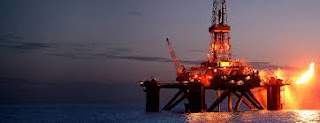In this article main topic will be to show importance of petroleum courses in rawalpindi islamabad lahore pakistan
When it comes to safety in the workplace, you cannot afford to take risks, which is why you need to buy the best quality self-contained breathing apparatus that you can rely on and trust.
Where you buy the equipment is exceptionally important, as you want to ensure that you buy only the best to keep your team members safe at all times. In order to meet strict health and safety requirements, you need to ensure that you have the relevant procedures in place at all times. This can reduce the risk of accidents and in the event that a situation occurs, you have the relevant equipment and rescue teams to handle the problem quickly and effectively.
The first factor you are going to want to take into consideration when it comes to buying self-contained breathing apparatus is to ensure that you purchase from a reputable company. You want the company to have years of knowledge and experience in the industry and to focus on providing you with the best quality and service to help you meet the health and safety requirements each and every day.
Furthermore, following information is provided in detail in petroleum courses in islamabad
The company you use for your self-contained breathing apparatus should provide a reliable service. Try and choose a company that can offer you a complete turnkey service, helping you with every stage from implementing new systems to ensuring you have adequate equipment to training on how to use the equipment and more. This way you have complete peace of mind that in the event your team needs to use the equipment when in a serious situation, they know what to do and how it works.
Look at all the services provided by the self-contained breathing apparatus company. The company should be available to do repairs, calibrations, servicing and they should offer a comprehensive consultation service that you can rely on and trust. In addition to this, they should provide training, ensuring your staff have the training they need when they need it most.
Further, look at the products on offer. While you may only need self-contained breathing apparatus now, you may need further products that they provide in the future. This means that you don't have to go through this long process again, but simply pick up the phone and call the company to place your order.
The only way you will really know that the company you have chosen is the best of the best is to do your homework. In addition to learning as much as you can off their website, you will also want to go online and type their name into the search engine to go through the results. Many companies offer reviews on their website, but you don't want to rely on this alone. Rather read honest customer reviews you find on independent review sites and online forums to help you make your decision.
This one simple step, which will only take you a short time, can help you narrow down your search to find a company that you believe is going to provide you with the highest quality products, the best service and the best prices.
Of course price is going to play a role in your decision, but don't let price be your only deciding factor. Rather focus on quality, service and support than price alone. In many instances it's better to pay slightly more for a product you know is going to provide your team with years of safety.
The final step is to ensure the self-contained breathing apparatus comes with a good warranty to provide you with complete peace of mind when making your selection.
Rahman Rashid is best trainer for petroleum courses in islamabad and please contact 0092-333-5380170 or email trainingcoursespakistan@gmail.com


